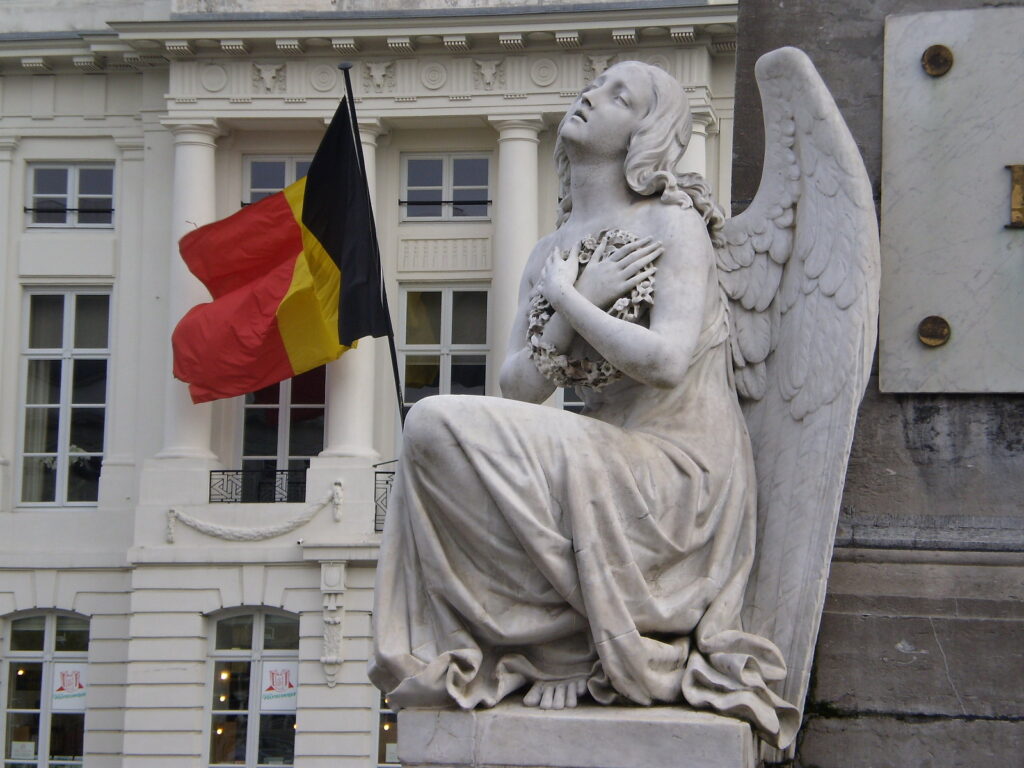
In the wake of the rise of figures such as Victor Orbán, Narendra Modi, Jair Bolsonaro, and Donald Trump, studies of religious nationalism, especially in its more populist registers, are on the rise. Part of the motive for these studies is to better understand why scholars, pundits, pollsters, journalists, and others failed to capture the level of dissatisfaction that has driven some voters in recent years to turn to politicians and causes that are in rhetoric and in practice promoting xenophobia, homophobia, misogyny, and racism. More deeply, scholars are grappling with the resurgence of forces that previous generations of political thinkers believed could be constrained by liberal principles.
Religious nationalism—and more broadly national identity construed in religious terms—has often served as an embodiment of exclusionary ideals. In the US context of White Christian nationalism, for example, the removal of the boundaries between church and State are being supported by public officials who also support ending gay marriage, restricting immigration, and censoring critical discussions of race. Others are calling for “common good constitutionalism” that supports a natural law reading of the constitution and would impose heteronormative laws on all citizens. There are many ways one might approach the examination of this resurgence of religious nationalism, including discursive analysis, ethnographic study, and through the use of critical theory.
This blog series builds upon and extends beyond these studies by focusing on the relationship between religion, the nation-state, and affect/emotion broadly construed. Its contributors draw on the resources of affect theory and studies of emotion to better understand the shifting politics of the nation-state in modernity and challenges to its politics. Such an intervention is necessary for understanding the complex ways in which people become attached to particular understandings of the nation (with its ethnic, racial, and linguistic constructions), and the role of religion in either supporting or hindering that attachment. These essays engage the state not at the high levels of political theory but in the felt realities of people living within it. Notably, the contributors here also extend the conversation beyond the Euro- and US-centric analysis by which it is typically constrained. This provides a unique perspective on our current political and social moment. The contributions not only provide a critical genealogical account of the role of affect—that is, the feelings, moods, and/or emotions that shape our individual and collective lives—in the construction of political loyalties and disloyalties, but also help us imagine ways of breaking through them to begin to imagine new affective alternatives.
Beginning in the US, Biko Mandela Gray examines the White nationalism that undergirds the seemingly neutral liberalism in the US. Casting White supremacy as a wider phenomenon than that of “tiki torches and white hoods,” for Gray, requires that we understand the way that White supremacy shapes our political and social horizons in a more deeply entrenched manner than the phrase “White nationalism” signifies. Philosophy, and more specifically phenomenology, has perpetuated a kind of Whiteness through its supposedly color-blind descriptions of how we experience the world. It is only by developing a paraphenomenology that challenges the dominance of this way of mapping the world that alternatives can begin to be imagined. Gray’s piece ends with a reflection on the way that White supremacy, even when it claims to be invested in diversity, equity, and inclusion, shapes policy not only in the US but abroad as well. Affects, as Gray makes clear, spill over borders even as they also reinforce them.
This is a theme also taken up in Candace Lukasik’s contribution to this series. Lukasik investigates how Coptic Christians who have immigrated to the US translate their experiences of marginalization in Egypt in their new home. In the US, Copts enter into a complex relationship with the racial politics of the US, at times distancing themselves from Muslim Egyptians in an attempt to evade the orientalist gaze of White supremacy. This assimilation into Whiteness has left Copts in an ambiguous position. Of particular note here is how the affect of injury and martyrdom function in some Coptic communities at times to bind them to dominant White evangelical discourse that contributes to White nationalism. Dependence on such discourse, in the end, interpolates Copts into the colonialist discourse on religion that is one of the sources of their marginalization.
Alessandro Gusman is also interested in how migration shapes the affects expressed by religious communities in relation to the nation. His work focuses on the lives of Congolese refugees who are living in Kampala, Uganda. Unlike Copts who have moved to the US, these refugees are unable to integrate into a new society and thus are forced to rely on the more ephemeral affect of trust in God’s plan rather than martyrdom to sustain them in their new home. Gusman describes how this hope that is expressed by Pentecostal pastors on Sunday mornings, sometimes drawing on the story of Exodus, offers a narrative to explain both the current situation of the Congolese, as well as the possibility that their lives might at some point change for the better. It is “God’s plan” that they must trust, not the secular institutions that claim to be acting on their behalf. In recent years, Gusman suggests, it has grown more difficult to sustain this hope and stronger political demands among the Congolese on Uganda and the international community have increased. A feeling of “stuckness” drives this political movement and leads it to imagine a future that lies beyond the current impasse.
If scripture can serve as an outpost of hope for marginalized communities, it can also serve to buttress the standing of the powerful. Hannah Strømmen, in her piece, outlines how the British far-right movement Britain First uses the Bible as a tool to assert a nativist White Christian identity over and against immigrants and Muslims. Its members frequently quote Bible verses in memes alongside expressions of nationalist sentiment in order to perform their British identity. The framing of these posts with seemingly benign imagery like blue skies and clouds, Strømmen contends, only hides the more dangerous message behind them. She ends her piece by suggesting that, despite Britain First’s claims otherwise, the Bible also contains stories of liberation from oppression and siding with the marginalized that are worth reclaiming.
The final contribution to this series focuses more specifically on the way the nation state produces particular affects in order to manage its citizenry. Omar Kasmani examines the way that the management of shrines was taken over by the Pakistani state as a way to establish its custodianship of proper Islam and to reap the financial benefits that would come from donations made at the shrines. In disrupting traditional custodianship rules for the shrines the state has opened them up to queer and trans people as sites where they too can come close to saints. By taking ownership of the shrines, then, new modes of religious intimacy are created across gender, sect, and sexuality.
Together, these essays demonstrate the power of affect to shore up nation state power, to disrupt it, and/or to contest it. One lesson they make clear is that it is not by repressing affect that liberatory aims of marginalized groups will be achieved, as the dream of the Enlightenment and liberal political theory have claimed. Rather, achieving these ends requires harnessing its unwieldy power, a power we ignore at our own peril.

